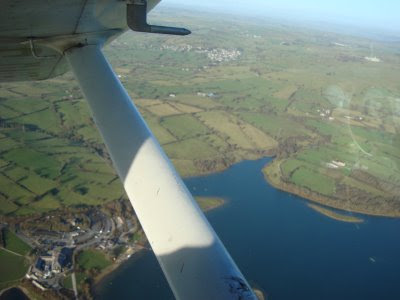
Saturday, 3 October 2009
THINK - DELAY - ACT!

Wednesday, 26 August 2009
Bush and Mountain Flying (3) - more snapshots
Bush and Mountain Flying (2) - more snapshots
Bush and Mountain Flying (1)

If you are thinking of Bush and Mountain flying in South Africa it would be wise to enrol for a course of instruction.
- Short, soft, rough and unimproved field take-off and landing
- Know the aircraft
- Optimum flap setting
- Maximum power for take-off
- Stabilized approach
- Braking
- Ground effect
- Very short landings
- Optimum speed at touch down
- Retracting flaps at touch down
- Taxying
- Unimproved surfaces
- Tailwheel/Nosewheel techniques
- Tying down
- Short field take-off
- Short field take-off with obstacle
- Short soft field take-off with obstacle
- Short rough field take-off
- Crosswind take-off
- Short field landing
- Short field spot landing
- Short soft field landing
- Landing over an obstacle
- Winds
- Rotors
- Mountain waves
- Orographic cloud
- Mountain breeze
- Valley breeze
- Fohn effect
- Katabatic wind
- Anabatic wind
Thursday, 30 July 2009
Flying in Southern Africa - Mozambique
Wednesday, 29 July 2009
Some Pics from Mozambique
 It is gratifying to see so many hits on this blog from so many countries on our planet.
It is gratifying to see so many hits on this blog from so many countries on our planet.Thursday, 5 March 2009
Instrument Flying.
 How is your instrument flying?
How is your instrument flying?My thanks to the author of this cartoon. It is one of my favourites!
Click here for a link to an aeroplane that I used to fly in my formative years in the RAF - the Whispering Giant. Here is a picture of the cockpit of the Bristol Britannia.
Wednesday, 4 February 2009
Point of No Return (PNR)

 Similar to Point of Equal Time or Critical Point (CP), the Point of No Return is a straight forward equation easily resolved on your Dalton flight computer.
Similar to Point of Equal Time or Critical Point (CP), the Point of No Return is a straight forward equation easily resolved on your Dalton flight computer.Equal Time Point (Critical Point)

Monday, 2 February 2009
What's AHEAD? Is this Aerofile Site Useful?
 What's ahead? Is this AEROfile site useful? OR is it time to shut it down?
What's ahead? Is this AEROfile site useful? OR is it time to shut it down?If there is any topic that YOU want published on this site then please say so via the comments facility. Use It Or Lose It!
Meanwhile, remember some of these Dead-Reckoning (DR) 'tips': See PPL Navigation Ex 18(X).
60/TAS x WS = Max Drift. (60 divided by True Air Speed multiplied by Met Office Windspeed = Maximum Drift in Degrees).
The 1/6ths rule:
0/6 of Max Drift for wind from 0-degrees OFF Track.
1/6 of Max Drift for wind from 10-degrees OFF Track.
2/6 of Max Drift for wind from 20-degrees Off Track.
3/6 of Max Drift for wind from 30-degrees Off Track. Etc up to 6/6 then Max Drift for 70, 80 and 90-degree beam wind.
HWC and TWC (Headwind & Tailwind Component): Use the 120 aide memoire:
Wind from 0, 10 & 20-degrees OFF Track: use 100% of Windspeed. (20+100=120 aide memoire)
Wind from 30-degrees OFF Track: use 90% of Windspeed. (30+90=120 aide memoire)
Wind from 40-degrees OFF Track: use 80% of Windspeed. (40+80=120 aide memoire)
Wind from 50-degrees OFF Track: use 60% of Windspeed. (50 use 60!)
Wind from 60-degrees OFF Track: use 50% of Windspeed. (60 use 50!)
Off-Track Correction:
Where, D1=Distance Flown. d1=Distance OFF track. D2=Distance to go to next waypoint.
T.E.1=Track Error in degrees after D1. T.E.1 correction (only) would result in the aircraft paralleling the reqired track to the next waypoint.
Therefore ADD T.E.2 to T.E.1 to fly direct to next waypoint.
60/D1 x d1 = T.E.1 and 60/D2 x d1 = T.E.2. ADD T.E.1 + T.E.2
Example:
Flying between waypoints A and B which are 120nm apart. After 40nm the aircraft is 4nm off track. What is the correction angle to fly to B?
D1=40. d1=4. D2=80.
60/40 x4=6-degrees (T.E1). 60/80 x4=3-degrees (T.E.2). Add 6+3=9-degrees correcton angle to fly to B from the OFF-Track position.
The author's other interest is motorbike touring. See here for the link.
Saturday, 3 January 2009
Another view of Over Haddon.



























